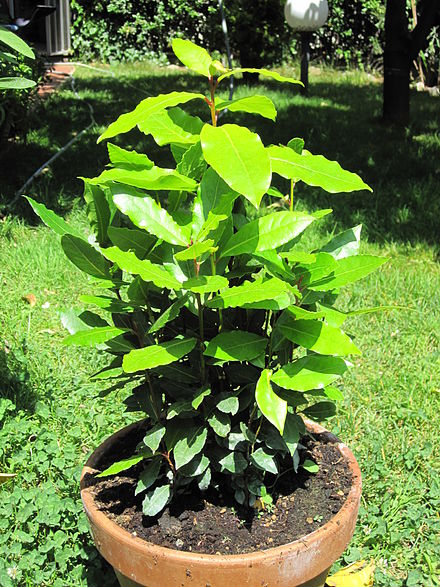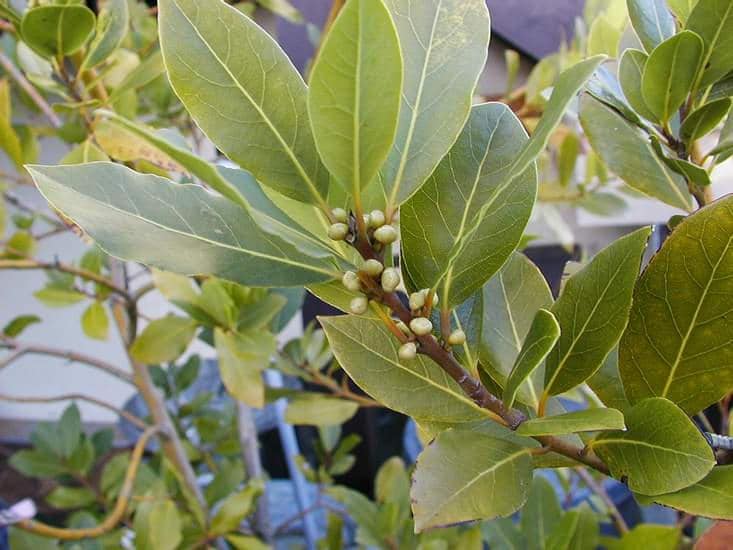Learn how to grow bay leaf laurel, it is a Mediterranean herb famous for its culinary uses. Growing Bay Leaf Laurel requires a basic knowledge of its requirements and growing conditions.
Bay Leaf Laurel is among the best known and most used herbs. Leaves of this small tree are aromatic and emit an intense scent that complements most of the Mediterranean recipes. Read on to know about how to grow bay laurel.
What is Bay Leaf?
Native to the Mediterranean region, bay leaf belongs to the Lauraceae family. It is an aromatic herb and has culinary as well as ornamental use. The leaf is consumed in dry-whole form and also known as sweet bay, laurel, and bay laurel.
Bay Leaf Laurel and History
For the Greeks and Romans, Bay was a sacred plant. Greeks used to plant the Laurel in the vicinity of the temples and burn the foliage during the rites, and to the Romans, it was a symbol of glory. In fact, crowns were created with twigs of this plant to crown the kings, emperors, and the victorious athletes.
Sources of Bay Leaf
One can obtain bay leaves from these six plants.
- California bay leaf – (Umbellularia californica)
- Indian bay leaf or malabathrum (Cinnamomum Tamala)
- Indonesian bay leaf (salam leaf, Syzygium polyanthum)
- West Indian bay leaf (Pimenta racemosa)
- Mexican bay leaf (Litsea glaucescens)
- Bay Laurel
How to Grow Bay Leaf
To plant it in the garden, dig a hole twice the size of the plant’s root ball. Incorporate a good amount of organic fertilizer in the planting hole.
Carefully break the root ball of the plant and cut any damaged or outgrown roots and insert the plant into the planting hole. Cover with soil and water deeply.
Watering
Bay leaf require regular watering only when the plant is young if you’re growing bay leaves plant on the ground. However, you must check the soil once in a while to see if the surface is dry, especially during the spring and summer. From fall and through the winter, reduce watering.
Soil
Laurel does not have excessive demands on the soil; it grows in poor soil too except if it is heavy and clay-rich and causes waterlogging. Like many other plants, it prefers well-draining soil.
Fertilization
Apply the liquid fertilizer every 15 days from spring to summer. Avoid feeding the plant in winter. As you’re growing it for the leaves, it is recommended to use a fertilizer that is high in nitrogen to favor the growth of lush green foliage.
Pruning
To have a stately plant, you should prune it every year. Always prune off dense, broken, and dead branches as they hinder the ventilation and airflow. The most propitious time to perform the pruning task is before the vegetative growth when the weather starts to warm up in the spring.
Also Read: 13 Easy To Grow Herbs for New Gardeners
Growing Bay Leaf in Pots
Laurel Bay leaf is a tree, but it can be grown in containers as well. To begin, choose a pot of at least 12 inches deep and wide. Ensure proper drainage and then plant the bay leaf plant at the same depth as it was in the previous pot, fill the pot with loamy potting soil and compost.
Repotting
Repot your plant in every two-three years, Bay leaf is a plant that does not develop quickly in pots. Repotting should be done in the spring using a good fertile soil that remains loamy as the plant doesn’t like stagnant water and good drainage is important.
Pests and Diseases
Bay laurel tree is strongly resistant to pests and diseases. The most common problems caused to bay laurel are due to overwatering, lack of sunlight, or excessive cold. Scales, aphids, and mites can also get attracted towards the weak plant, which should be treated immediately using an organic pesticide.
Harvesting
The leaves can be harvested all year round, and fruits are collected in the fall when they are ripe. The leaves can be used fresh, or you can preserve them by air drying.
Air dry bay leaf in the shade for three-four days and once dried keep the leaves in an airtight jar. Dried leaves last for about one year. After this, they lose much of their flavor. The berries are also dried in the oven at a low temperature and then preserved in jars, they taste much stronger and robust than leaves.
Also Read: Growing Chamomile in Pots
Benefits of Bay Laurel
Bay leaf is a popular cooking herb and used in flavoring soups and stews. It contains essential nutrients and offers many health benefits. These includes:
- Bay leaf helps in regulating and preventing diabetes as it contains powerful antioxidants.
- The leaf extract contains anti-inflammatory properties and can cure common skin problems.




We have two Bay Laurels. One is bushy, the other has tall, straight “shoots” which are becoming too tall for the windowsill it lives on in the winter. If I prune these shoots down, will they branch out from the stem?
This explains a lot. My plant was doing really badly, stems were getting dark and the leaves were drying up. When I repotted it the ground was very wet below the surface. I hope that was the problem and it will get better now.
Hi I have laurels plants in the aground at the front of my house just the leaves are turning yellow and something have been eating at the leaves what should I put on thankyou
Is it safe from red spider mites
Our Bay Laurel seems to be doing okay. It is in a shady spot in a pot. Do they prefer sunny areas?